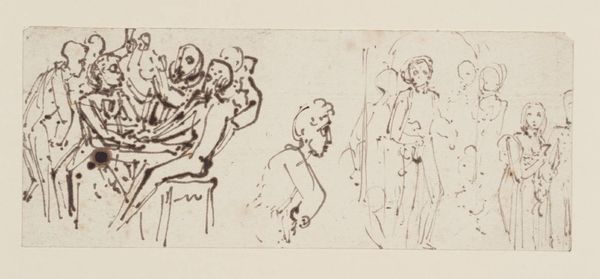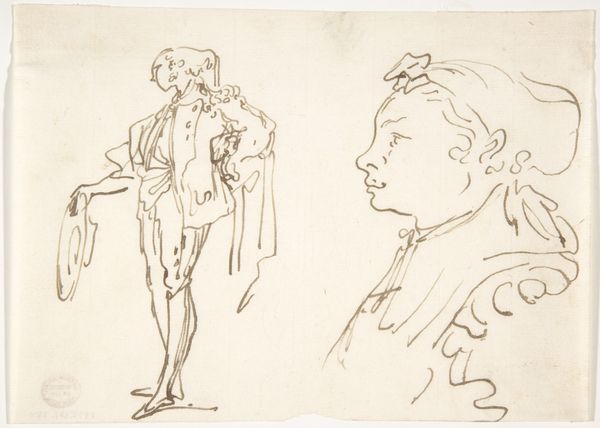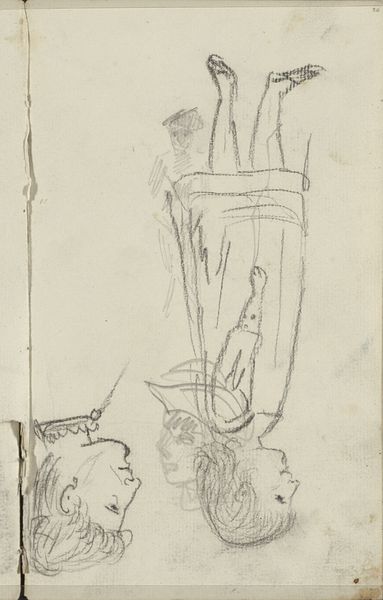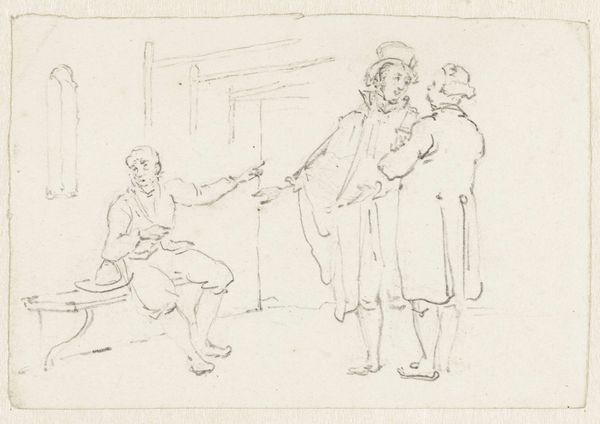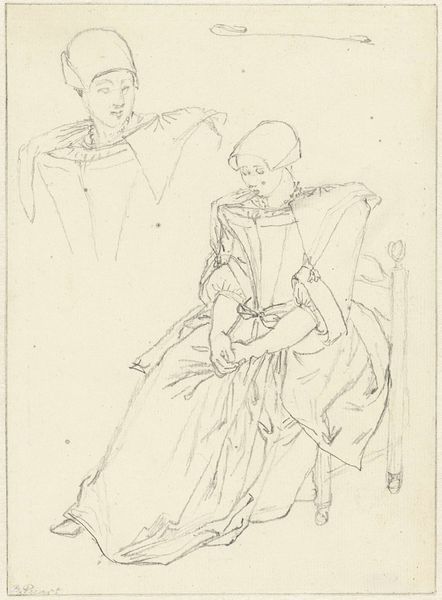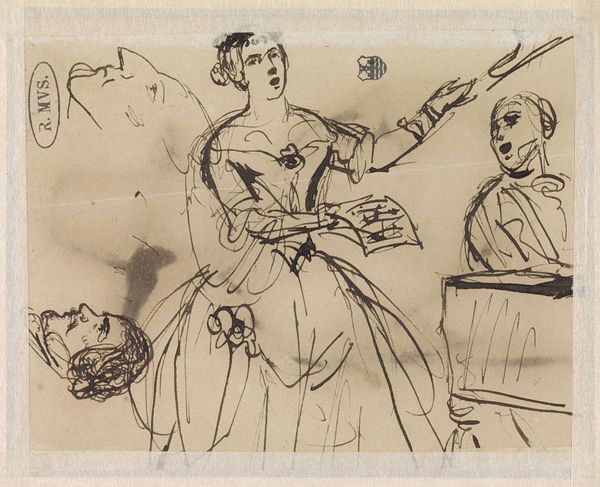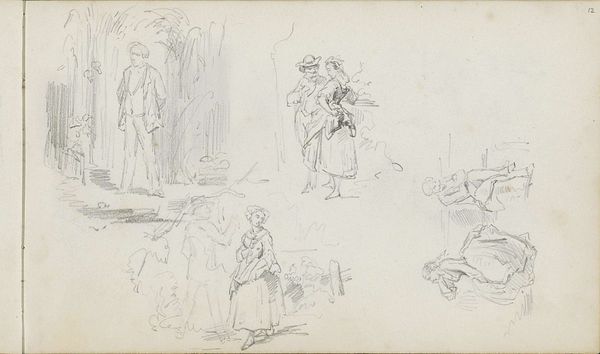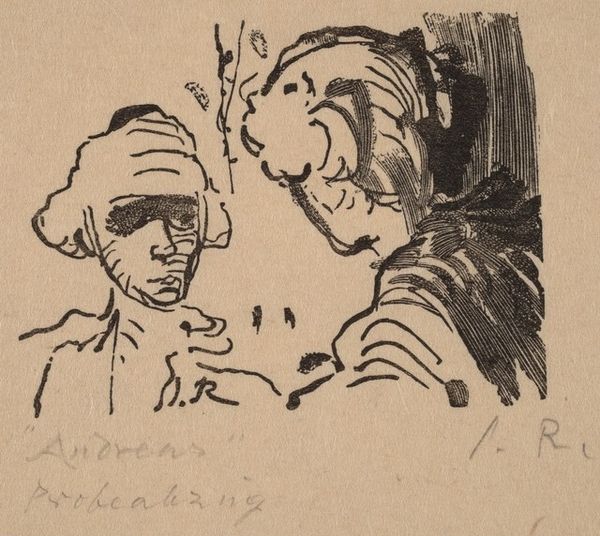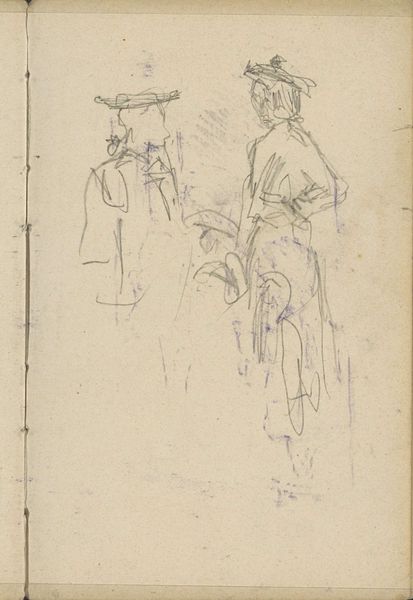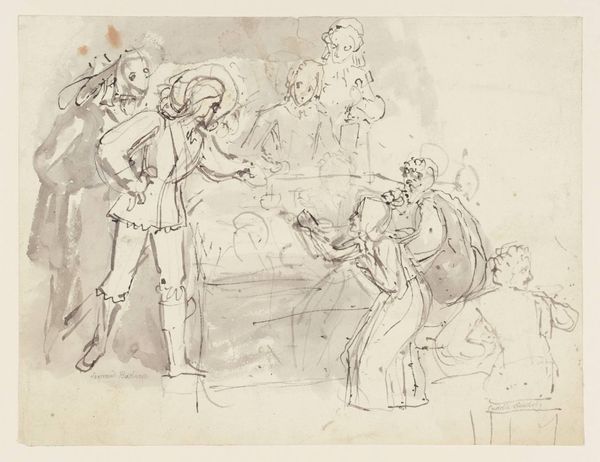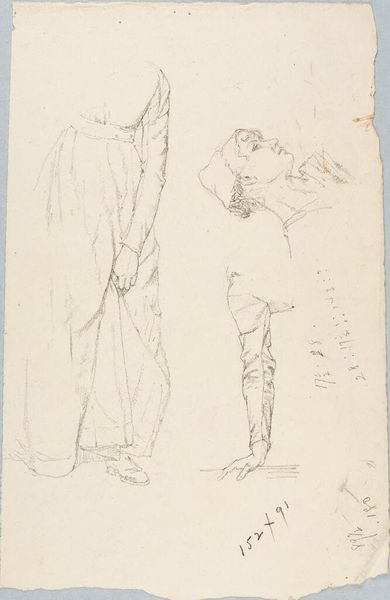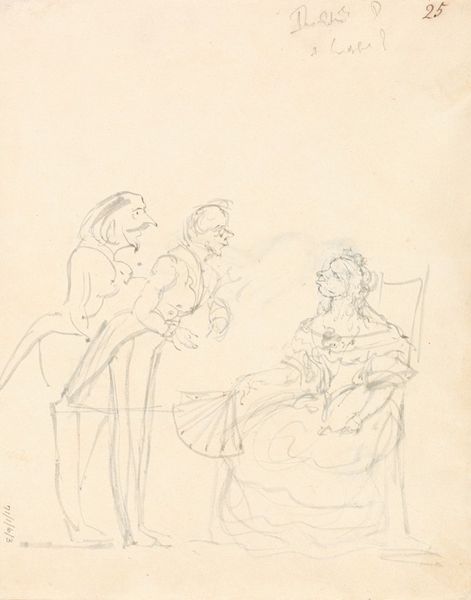
drawing, pencil
#
portrait
#
drawing
#
comic strip sketch
#
imaginative character sketch
#
quirky sketch
#
figuration
#
personal sketchbook
#
idea generation sketch
#
sketchwork
#
character sketch
#
pencil
#
sketchbook drawing
#
genre-painting
#
storyboard and sketchbook work
#
academic-art
#
initial sketch
Dimensions: height 175 mm, width 205 mm
Copyright: Rijks Museum: Open Domain
Curator: These loose, lively pencil sketches—"Twee schetsen van een man," or "Two Sketches of a Man"—are attributed to David Bles and date roughly between 1831 and 1898. What jumps out at you? Editor: Immediately, a sense of unease. It's like glimpsing figures caught between dimensions, these shadowy outlines of men… It gives me a very strong melancholic feel, perhaps exacerbated by how unfinished it seems. Curator: That’s interesting! For me, they feel full of potential. The sketch at the top seems almost jaunty. Notice how lightly Bles renders his clothes, his casual pose… He seems almost caught in a moment, which gives the whole drawing an air of immediacy. The sketch below, by comparison, seems almost stolid. Editor: I see the immediacy you are pointing towards, but there is also a fragility there, like ghosts trying to form. If we consider what a man during the 19th century might be permitted in representing within artwork, what can we tell about the figures, from the limited view available in the sketches, about their masculinity, race or class? Is this a space for an expression of being, or some sort of limited conformity of expectations? Curator: I agree there is a fragility! Pencil sketches do that, I think; they are inherently ephemeral, capturing fleeting impressions. Now, placing this within a context where traditional portraiture dictated highly staged and idealized depictions… Bles is almost certainly playing with or rejecting those conventions. Look at how little detail he provides, how much is left to the viewer's imagination. I agree it feels non-confirmative somehow, it opens more questions. Editor: Exactly. How are we as contemporary viewers implicated in these readings, filtered by our own expectations and perhaps even prejudices? Even the very lack of detailed physical characteristics could invite projections that serve only to distance or misrepresent the figure. It leads me to question, why sketches were produced, what for and to whom. Was there a commercial aim behind it? Was it the pre-step before painting and further idealisation of that model figure? Curator: Maybe… or maybe these sketches are intended only for the artist, to develop ideas. It suggests intimacy with the process. They were from the Rijksmuseum, after all! Regardless, they spark so many ideas even today. Editor: Precisely. This little dance between intention and interpretation keeps these figures alive, long after the pencil has stopped moving. It's been thought provoking!
Comments
No comments
Be the first to comment and join the conversation on the ultimate creative platform.
